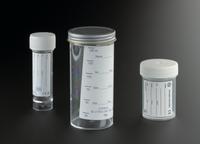





Skey's tourniquet, oval adjustable frame with fixed and screw-down pressure pads, by Arnold, c. 1866-1927
This tourniquet was used to compress and control heavy bleeding during operations. It is composed of a flexible steel ring fitted with two pads, whose position can be adjusted by screws. This tourniquet could be used to compress a whole limb or a specific artery. Due to its design the pads were the only two points where pressure was applied, allowing the other arteries and veins to function as normal. Made by Arnold & Sons, this type of tourniquet was shown at the Great Exhibition of 1851 and was invented by Frederick Carpenter Skey (1798-1872), an English surgeon. It was not uncommon for surgeons to devise new instruments to help their work.
Details
- Category:
- Surgery
- Collection:
- Sir Henry Wellcome's Museum Collection
- Object Number:
- A600722
- Materials:
- steel (metal), metal (unknown), felt and complete
- Measurements:
-
overall: 42 mm x 292 mm x 202 mm, .4kg
- type:
- tourniquet




